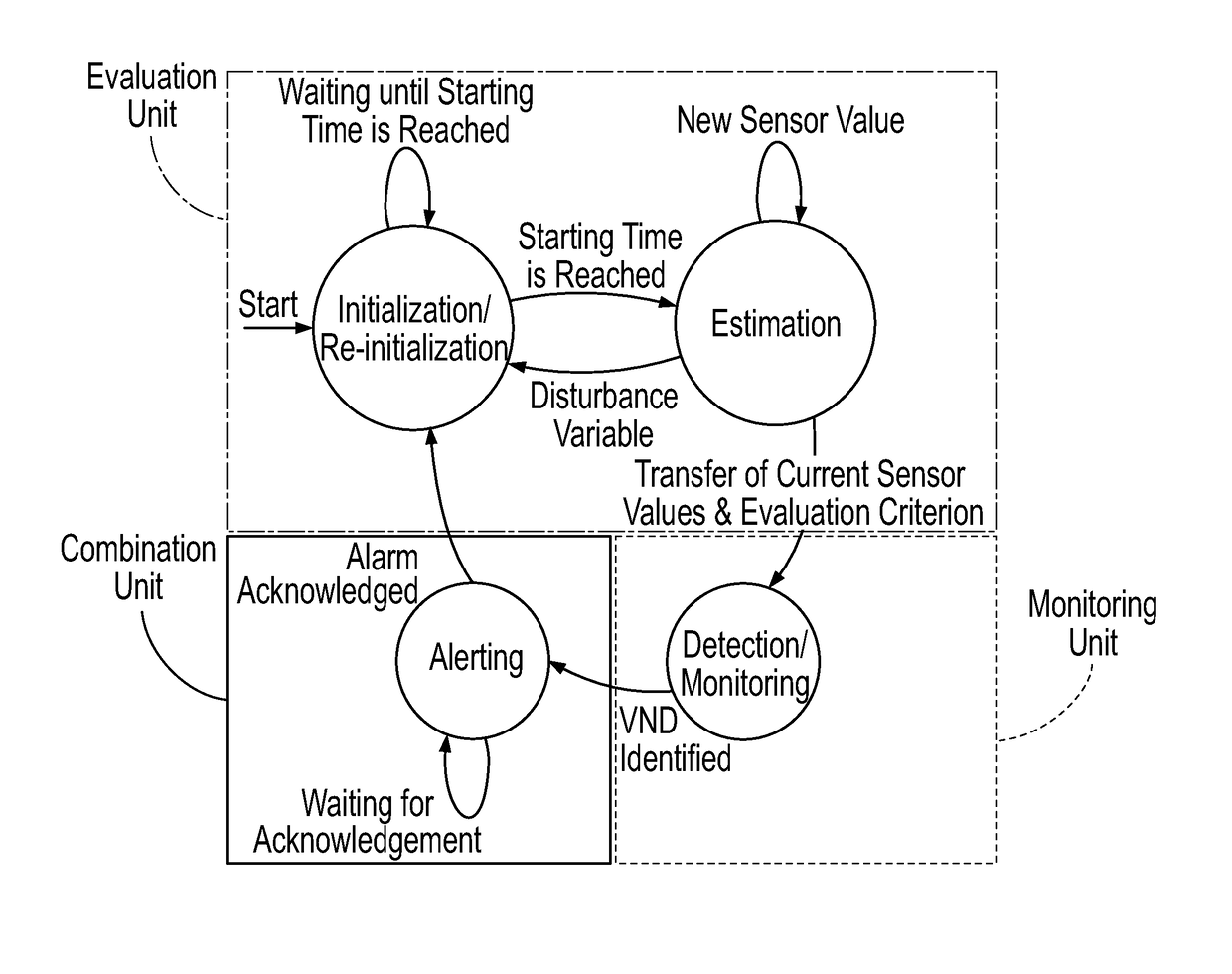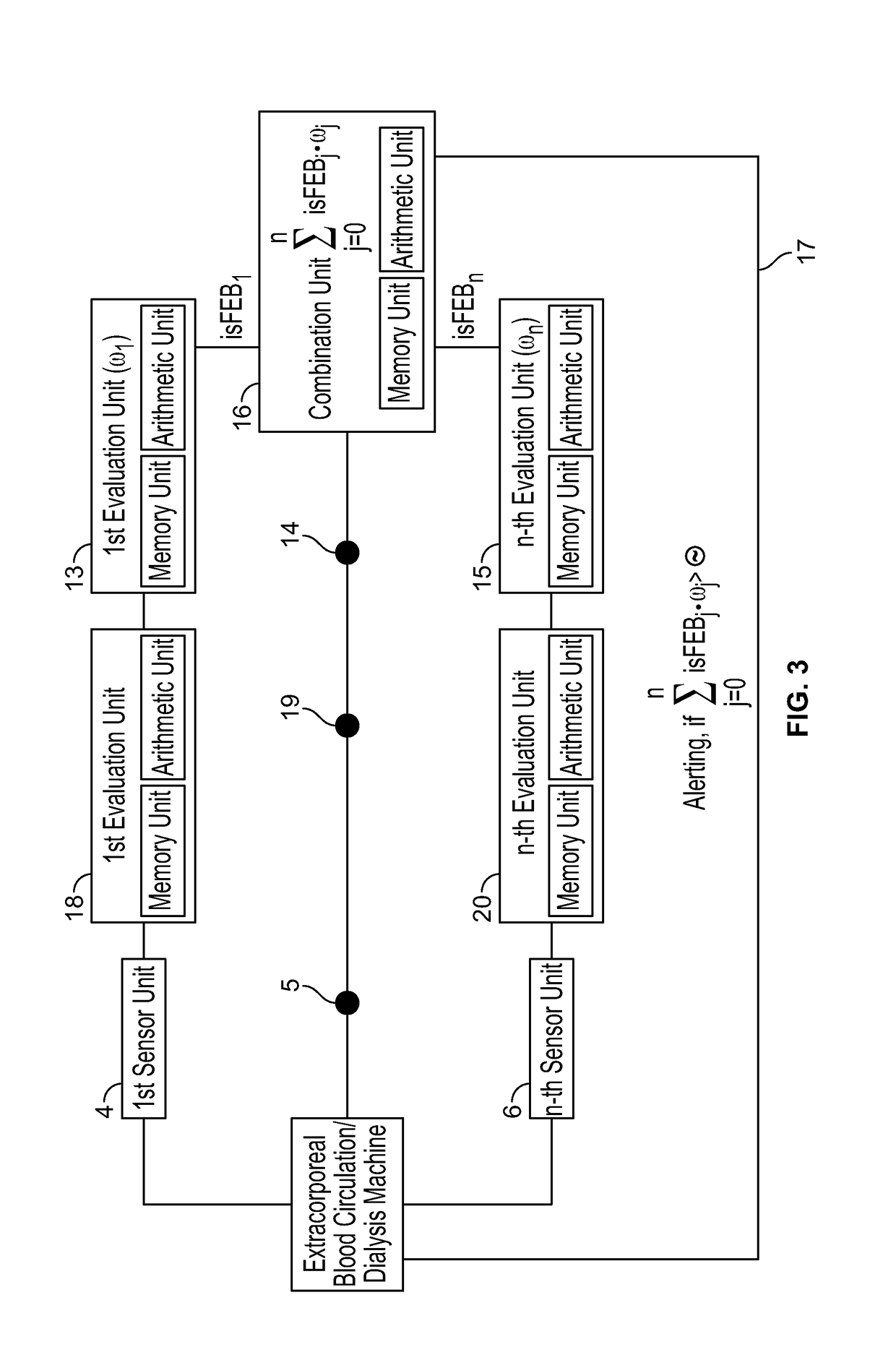Device and method for identifying a malfunction in an extracorporeal blood circulation
a technology of extracorporeal blood circulation and equipment, applied in medical devices, liquid/fluent solid measurement, tube connectors, etc., can solve the problems of only covering a limited range of pressure characteristics, known methods and systems are prone to false alarms, and staff become emotionally blunted, so as to achieve high safety and reliability, false alarm
- Summary
- Abstract
- Description
- Claims
- Application Information
AI Technical Summary
Benefits of technology
Problems solved by technology
Method used
Image
Examples
Embodiment Construction
[0037]The description of the invention on the basis of the exemplary embodiments of the system according to aspects of the invention and the method according to aspects of the invention is made with reference to so-called venous needle disconnections or dislodgements (VND, “Venous Needle Dislodgement”). This reference to VND is not limiting and the invention and the described exemplary embodiments may serve for detecting any malfunctions in the extracorporeal blood circulation of a blood treatment device.
[0038]Due to movements of the patient or because of an inadequate fastening of a needle or cannula on a patient or due to an insufficient attachment of a blood conduit of an extracorporeal blood circulation to a needle / cannula as the connection between the patient's bloodstream and the extracorporeal blood circulation of a dialysis machine, the needle may get unloosed completely or in part, i.e. a disconnection may occur. This is problematic in particular with a venous needle, as th...
PUM
| Property | Measurement | Unit |
|---|---|---|
| blood flow rates | aaaaa | aaaaa |
| time | aaaaa | aaaaa |
| dialysis fluid flow rate | aaaaa | aaaaa |
Abstract
Description
Claims
Application Information
 Login to View More
Login to View More - R&D
- Intellectual Property
- Life Sciences
- Materials
- Tech Scout
- Unparalleled Data Quality
- Higher Quality Content
- 60% Fewer Hallucinations
Browse by: Latest US Patents, China's latest patents, Technical Efficacy Thesaurus, Application Domain, Technology Topic, Popular Technical Reports.
© 2025 PatSnap. All rights reserved.Legal|Privacy policy|Modern Slavery Act Transparency Statement|Sitemap|About US| Contact US: help@patsnap.com



